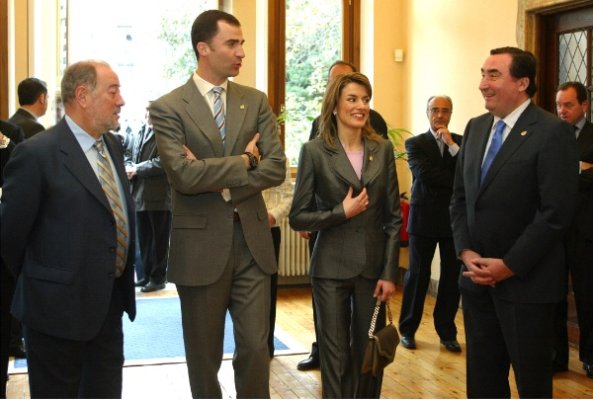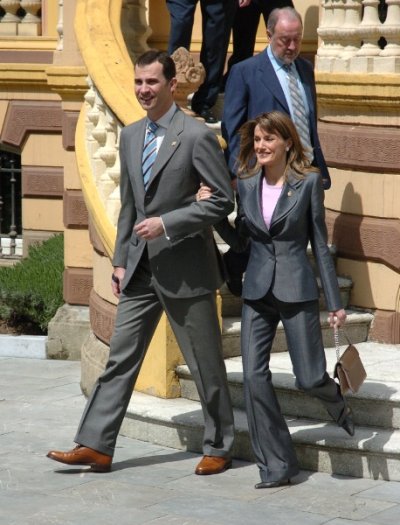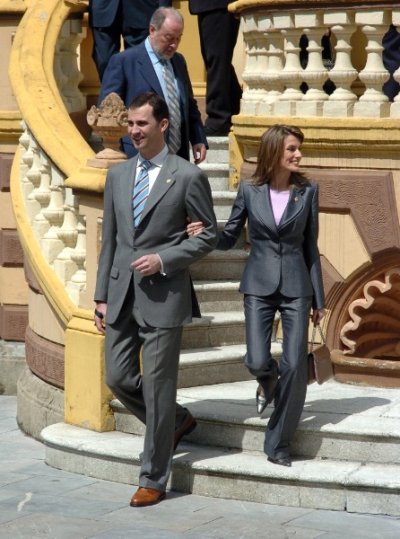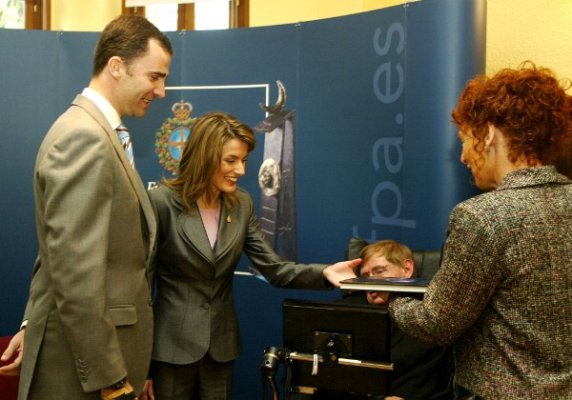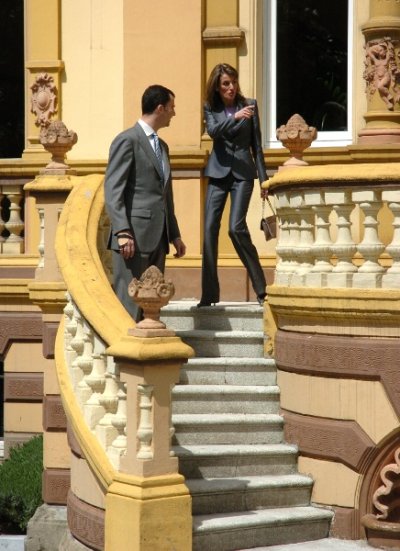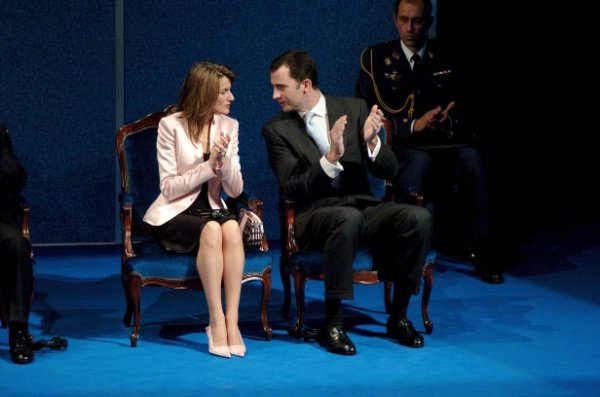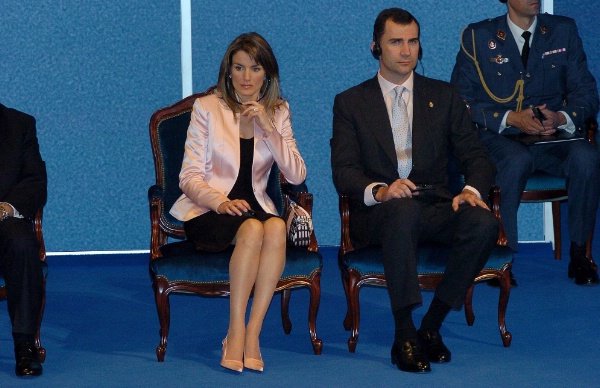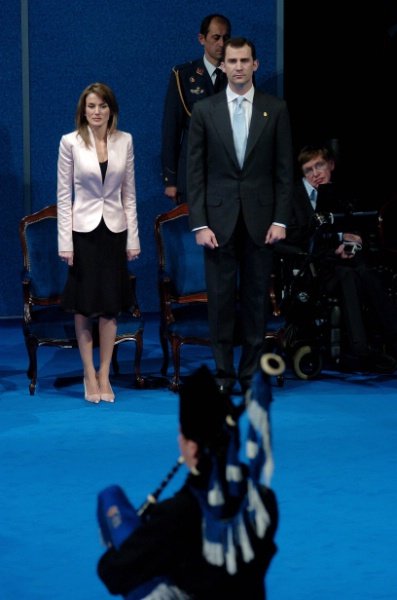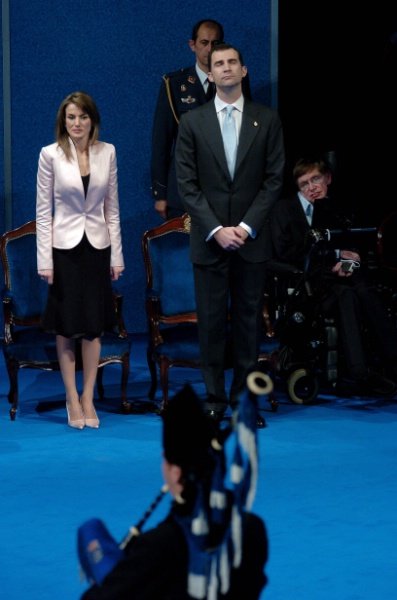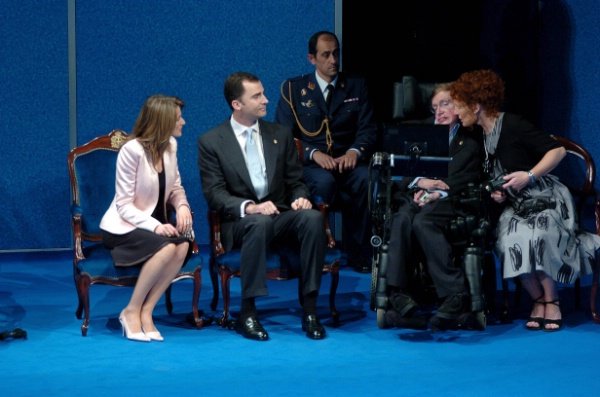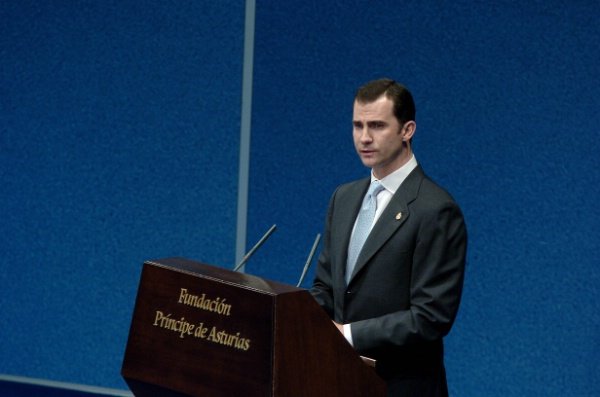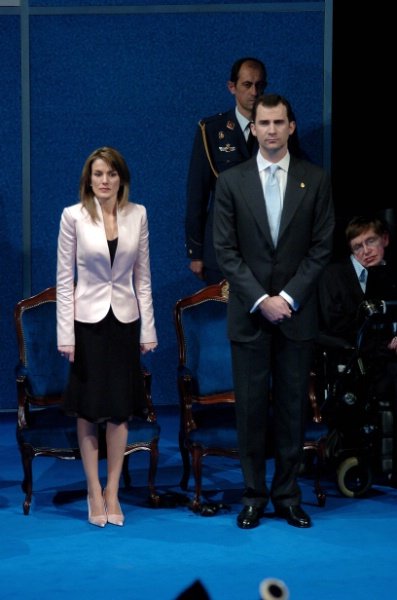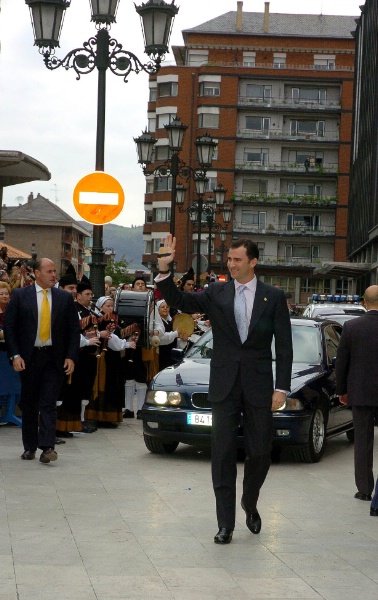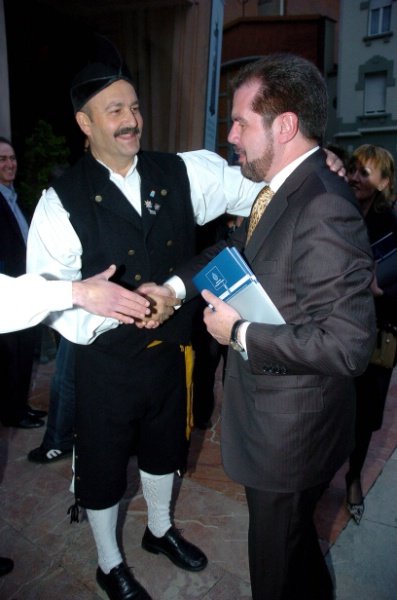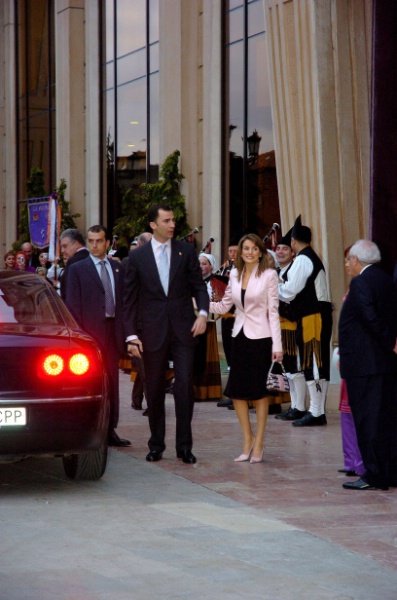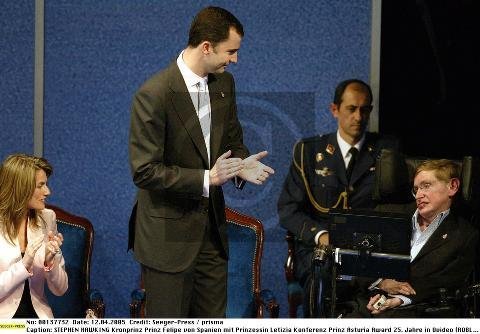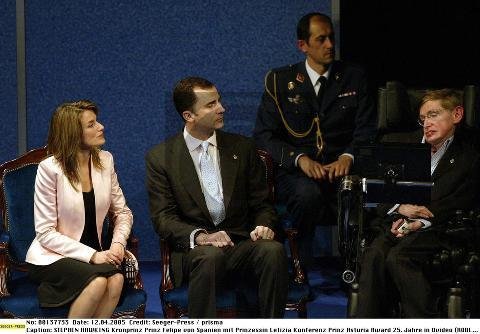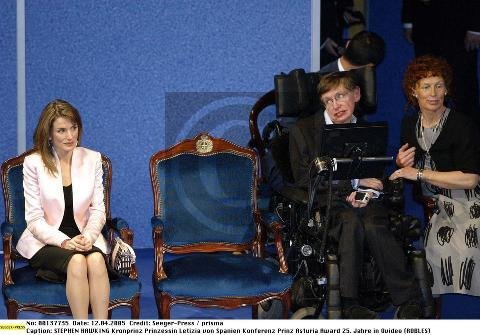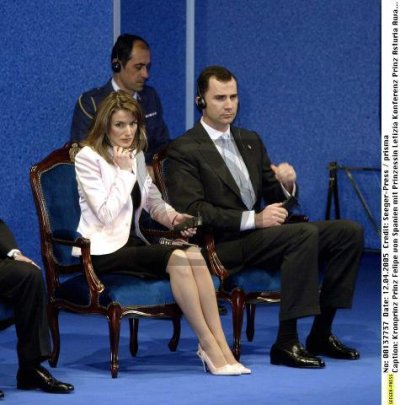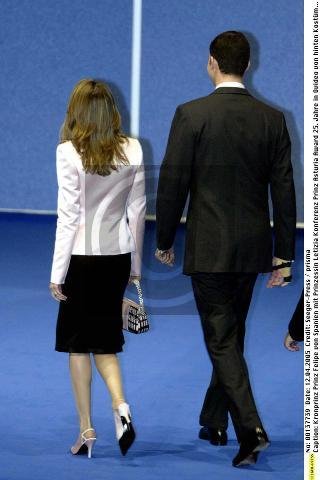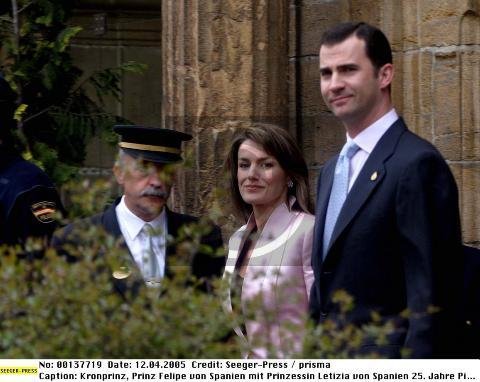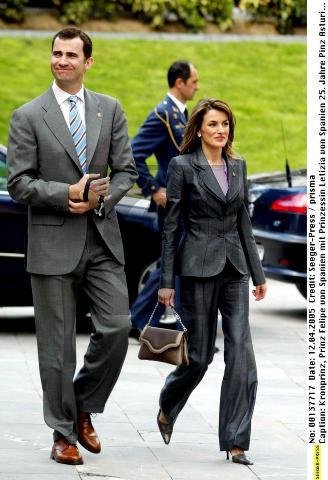Elsa M.
Heir Apparent , TRF Author
- Joined
- Dec 4, 2004
- Messages
- 5,808
- City
- --
- Country
- Portugal
Articles from La Nueva España:
http://www.lne.es/secciones/noticia.jsp?pIdNoticia=279228&pIdSeccion=46&pNumEjemplar=877
http://www.lne.es/secciones/noticia.jsp?pIdNoticia=279233&pIdSeccion=46&pNumEjemplar=877
A blond blue eyed boy called Felipe, son of the King and Queen of Spain, pronounced in Oviedo, in 1981, his first speech, under the attentive glances of his parents. He then presided over the first prize giving ceremony of the prizes that bear his name, the same one to whom the poet José Hierro, months after the coup d'etat of Tejero, remembered the importance of democracy and freedom.
Twenty-five years later, the Prince of Asturias, accompanied by his wife, the Ovetense Letizia Ortiz, remembered yesterday the lessons learned through this time and on this land: "Every autumn, we sent the world a message of passion for freedom with our prizes", he said.
The Foundation Prince of Asturias changed of scene, from the Campoamor to the Auditorium: a sober decoration, in tones of blue, much public, more politicians than scientists, more artists than in other occasions, well-known Madrilenian and mainly Asturian faces.
The opening of the XXV Anniversary of the Foundation had a protagonist, the British astrophysicist Stephen Hawking, one of great myths of our time, prize "Prince of Asturias" of the Concord in 1989. His conference, entitled "The nature of reality", was the center of all attentions.
On the scene, there was no table, only chairs and a projection screen. Next to the Princes, there were the institutional representatives. Two videos were projected: "Unforgettable moments" and "Words for ever". Both gathered moments and fragments of speeches pronounced by some of the awarded personalities. Specially touching were the images of Sefardí Solomon Gaon, crying of emotion for his return to Spain, or those of the actress Elizabeth Taylor, saying "I’m arriving with the heart full of hope", as well as the singular voice of Cela, "In Spain, the one who resists, wins", or the voice of Isaac Rabin, talking about Peace (then it seemed possible) between Palestinians and Israeli.
Don Felipe initiated his speech with a "moved and respectful tribute" to the deceased Pope John Paul II, "whose personality and work have marked, without any doubt, the history, the thought and the conscience of millions of human beings". There was no applause, in spite of the pauses made by Don Felipe.
The words of the Prince thanked all those who made possible to arrive at this point. He sent a special memory for the first president, Pedro Masaveu, as well as for the Nobel Severo Ochoa, jury of the prize Prince of Asturias for Scientific and Technical Research.
He remembered the "so beloved” illusion that the prizes "are, from Asturias and before the world, a great work of the united Spaniards". He was specially thankful to Hawking, for having accepted the invitation of the Foundation. "Today he represents all the 242 people or groups, who have carried out these 25 years".
On this occasion, Don Felipe chose Neruda, Octavio Paz and Juan Ramon Jiménez for his literary appointments. From the first one, he chose the "beautiful and full days of hope that have not arrived yet"; from Paz, he remembered his words pronounced at the Campoamor, when he said that the prizes "draw a map of moral and intellectual luck to our world"; from Juan Ramon Jiménez, he remembered the way "with roots and wings". In the end, he paid tribute to Asturias, "sweet and simultaneously brave land" that has helped to discover another great lesson of the prizes: "that the most beautiful and promising adventure of the Spaniards (if we want to reach the highest goals, as so many other times we have done it) is advancing towards the future united in our rich and wonderful plurality of feelings".
http://www.lne.es/secciones/noticia.jsp?pIdNoticia=279228&pIdSeccion=46&pNumEjemplar=877
http://www.lne.es/secciones/noticia.jsp?pIdNoticia=279233&pIdSeccion=46&pNumEjemplar=877
A blond blue eyed boy called Felipe, son of the King and Queen of Spain, pronounced in Oviedo, in 1981, his first speech, under the attentive glances of his parents. He then presided over the first prize giving ceremony of the prizes that bear his name, the same one to whom the poet José Hierro, months after the coup d'etat of Tejero, remembered the importance of democracy and freedom.
Twenty-five years later, the Prince of Asturias, accompanied by his wife, the Ovetense Letizia Ortiz, remembered yesterday the lessons learned through this time and on this land: "Every autumn, we sent the world a message of passion for freedom with our prizes", he said.
The Foundation Prince of Asturias changed of scene, from the Campoamor to the Auditorium: a sober decoration, in tones of blue, much public, more politicians than scientists, more artists than in other occasions, well-known Madrilenian and mainly Asturian faces.
The opening of the XXV Anniversary of the Foundation had a protagonist, the British astrophysicist Stephen Hawking, one of great myths of our time, prize "Prince of Asturias" of the Concord in 1989. His conference, entitled "The nature of reality", was the center of all attentions.
On the scene, there was no table, only chairs and a projection screen. Next to the Princes, there were the institutional representatives. Two videos were projected: "Unforgettable moments" and "Words for ever". Both gathered moments and fragments of speeches pronounced by some of the awarded personalities. Specially touching were the images of Sefardí Solomon Gaon, crying of emotion for his return to Spain, or those of the actress Elizabeth Taylor, saying "I’m arriving with the heart full of hope", as well as the singular voice of Cela, "In Spain, the one who resists, wins", or the voice of Isaac Rabin, talking about Peace (then it seemed possible) between Palestinians and Israeli.
Don Felipe initiated his speech with a "moved and respectful tribute" to the deceased Pope John Paul II, "whose personality and work have marked, without any doubt, the history, the thought and the conscience of millions of human beings". There was no applause, in spite of the pauses made by Don Felipe.
The words of the Prince thanked all those who made possible to arrive at this point. He sent a special memory for the first president, Pedro Masaveu, as well as for the Nobel Severo Ochoa, jury of the prize Prince of Asturias for Scientific and Technical Research.
He remembered the "so beloved” illusion that the prizes "are, from Asturias and before the world, a great work of the united Spaniards". He was specially thankful to Hawking, for having accepted the invitation of the Foundation. "Today he represents all the 242 people or groups, who have carried out these 25 years".
On this occasion, Don Felipe chose Neruda, Octavio Paz and Juan Ramon Jiménez for his literary appointments. From the first one, he chose the "beautiful and full days of hope that have not arrived yet"; from Paz, he remembered his words pronounced at the Campoamor, when he said that the prizes "draw a map of moral and intellectual luck to our world"; from Juan Ramon Jiménez, he remembered the way "with roots and wings". In the end, he paid tribute to Asturias, "sweet and simultaneously brave land" that has helped to discover another great lesson of the prizes: "that the most beautiful and promising adventure of the Spaniards (if we want to reach the highest goals, as so many other times we have done it) is advancing towards the future united in our rich and wonderful plurality of feelings".
Last edited:


